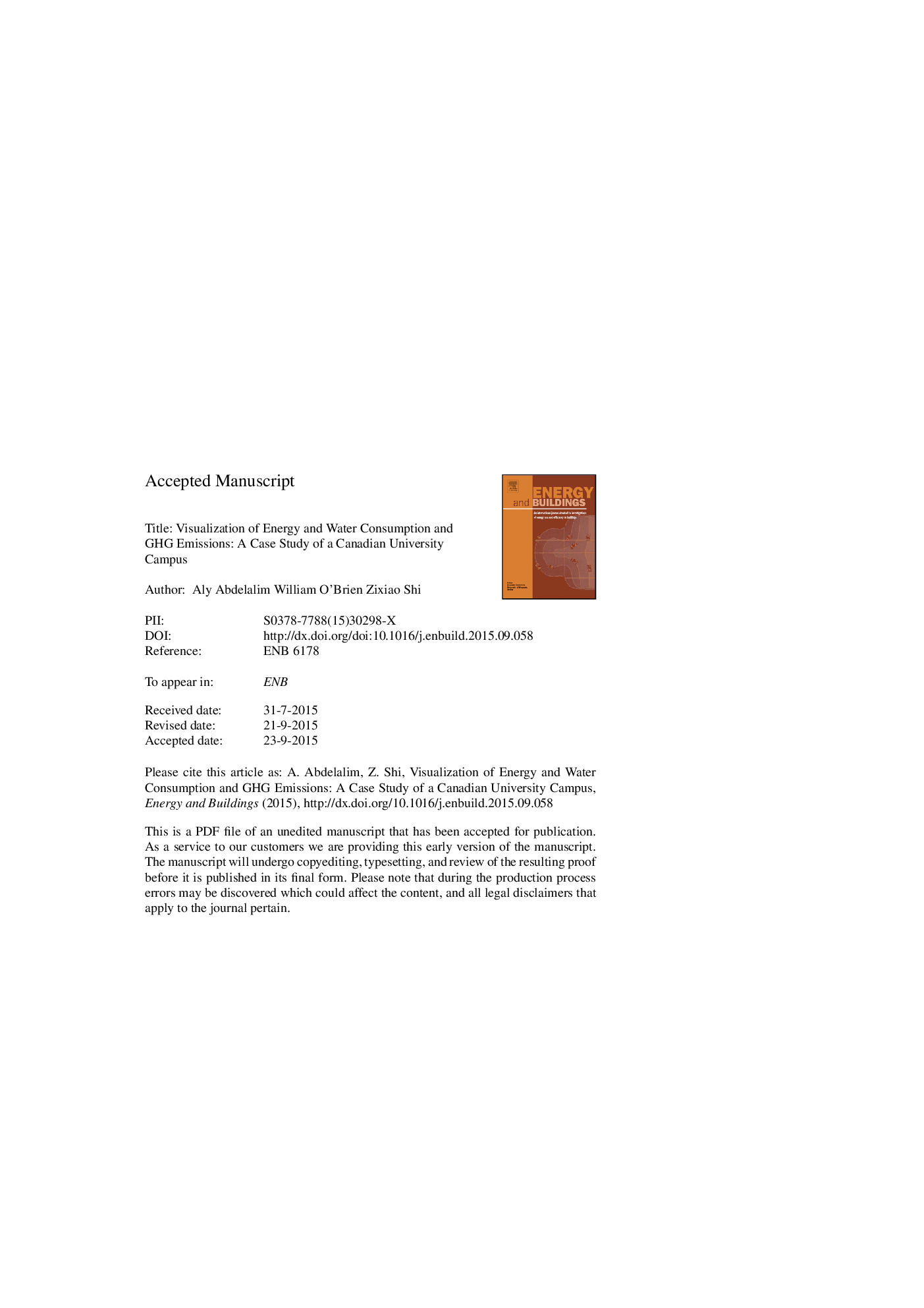| Article ID | Journal | Published Year | Pages | File Type |
|---|---|---|---|---|
| 6731055 | Energy and Buildings | 2015 | 41 Pages |
Abstract
Campuses, communities, and other building clusters are major users of energy and water and thus can have a significant environmental impact. Frequently, their buildings' resource consumption is metered to various levels of resolution to attempt to track and reduce it. However, the metering and data logging systems are often inconvenient and difficult to access due to use of multiple systems and technologies of varying vintages. This paper proposes several methods to analyze and visualize building-level water, natural gas, and electricity consumption and the upstream environmental impacts: Sankey diagrams and bar charts that normalize metered values by floor area and occupancy. The objective is to improve accessibility of these data to all stakeholders, including building operators, planners, occupants, and utilities. The methods are then applied to a 45-building Canadian university campus and an array of graphical representations of the data is provided. The resulting analysis and visualization reveals significant variation in consumption between buildings regardless of building vintage and function. Furthermore, it is concluded that identifying resource consumption reducing strategies, once inefficient buildings have been identified, would require higher data resolution - both spatial and temporal.
Keywords
Related Topics
Physical Sciences and Engineering
Energy
Renewable Energy, Sustainability and the Environment
Authors
Aly Abdelalim, William O'Brien, Zixiao Shi,
